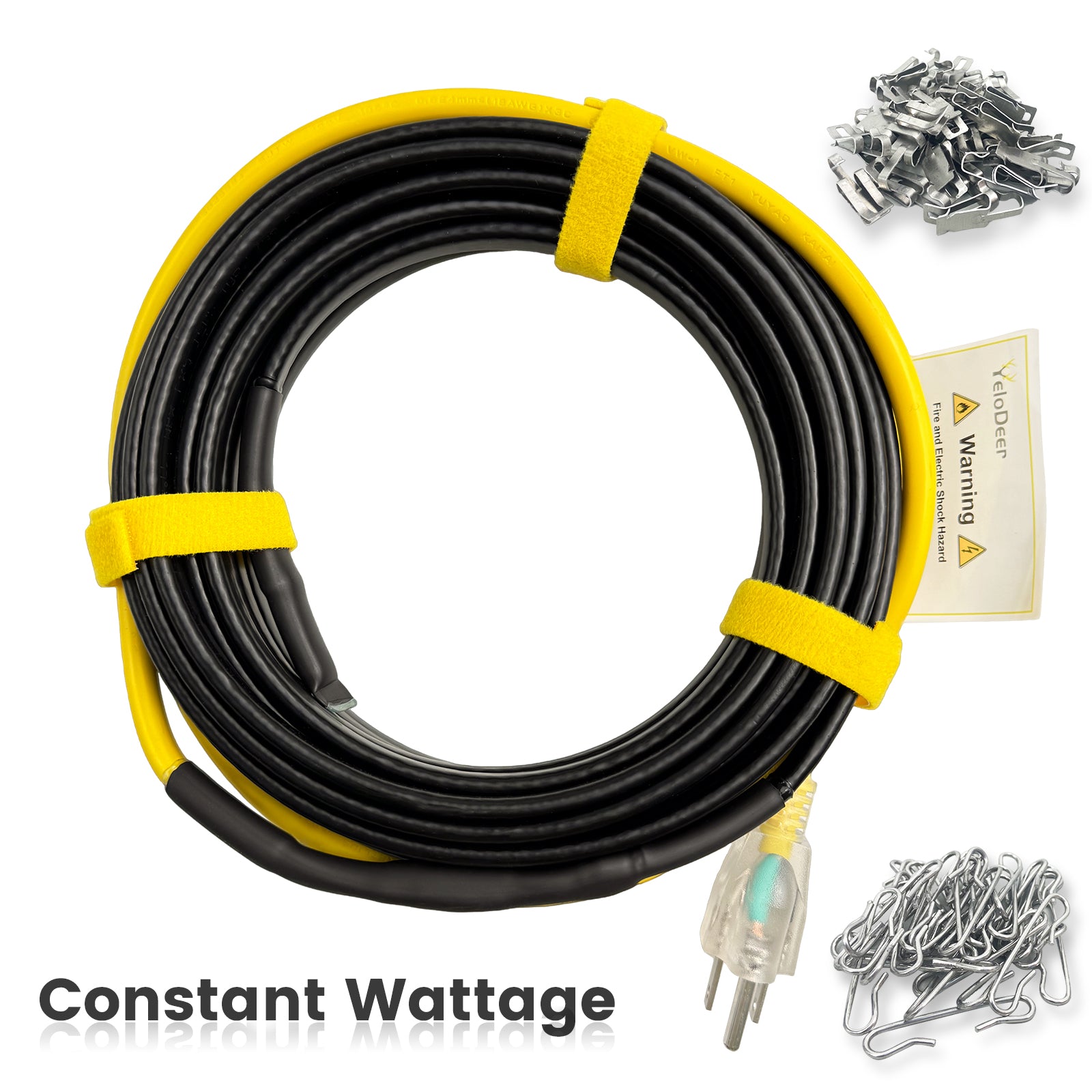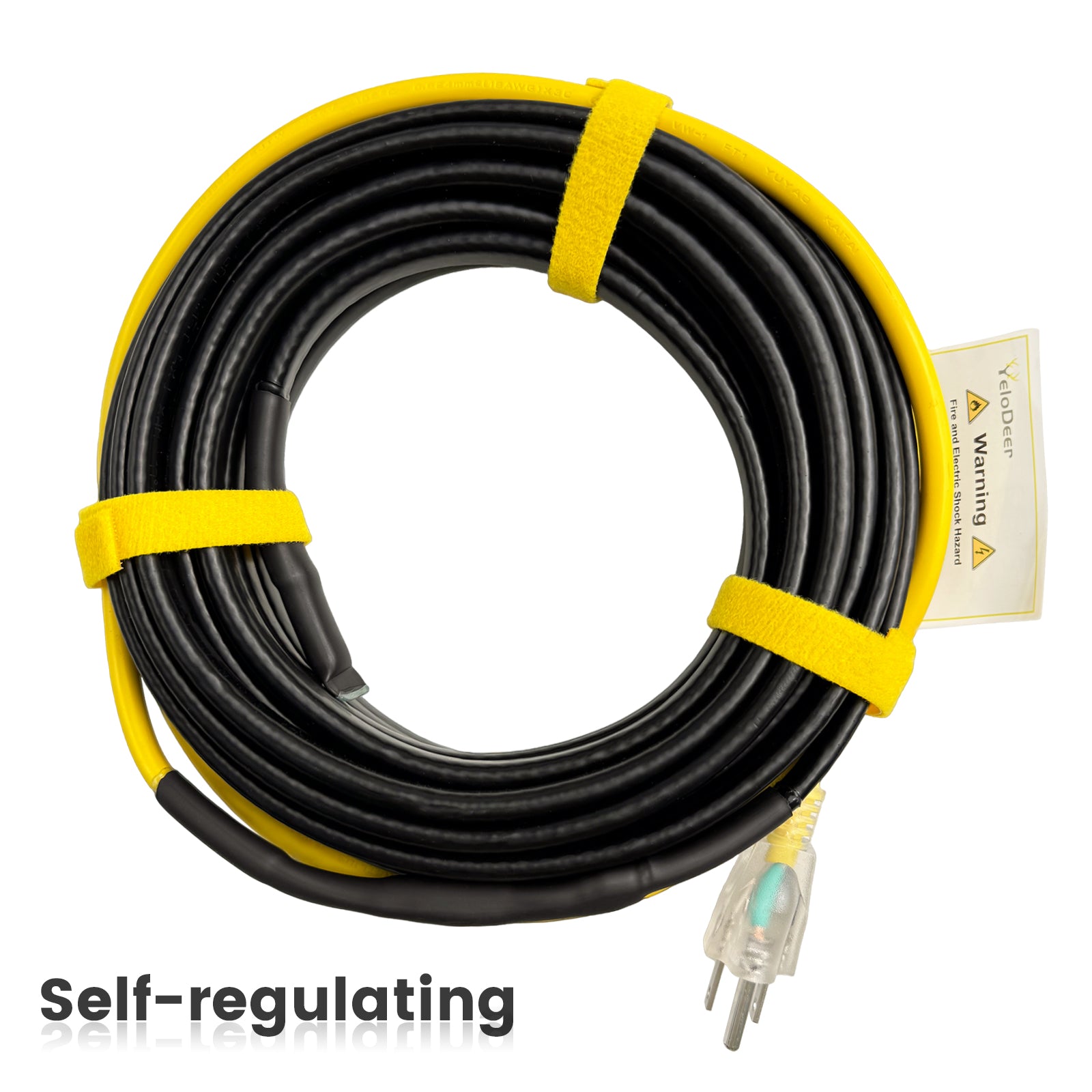If you haven't already, make sure to read our previous article on how ice dams form, their dangers, and the various methods to address them, including the benefits of installing roof deicing cables. It provides essential background on the problem and sets the stage for understanding the solutions.
In this article, we'll delve deeper into how roof deicing heat cables operate, their advantages, and compare different types of heating cables to help you choose the best option for your home.
How Roof Deicing Heat Cables Work
Roof de-icing heat cables are designed to prevent ice dams and other winter-related roof issues. Here's how they function:
● Installation: These cables are installed along the roof's edges and in gutters.
● Activation: They can either be directly plugged into a power source manually to start working or connected to a thermostat that activates them automatically when temperatures drop below a certain point.
● Operation: Once activated, the cables generate heat that melts snow and ice, allowing water to flow off the roof and preventing ice dams from forming.
Types of Heating Cables: Constant Wattage vs. Self-Regulating
When choosing a roof deicing system, understanding the differences between constant wattage and self-regulating heating cables is crucial:
1. Constant Wattage Cables

○ Advantages: Provide a consistent level of heat output. Ideal for areas with consistently cold temperatures throughout the winter.
○ Disadvantages: Less energy-efficient as they run at a constant power level, regardless of the actual temperature. This can lead to higher energy bills and potential overheating.
2. Self-Regulating Cables

○ Advantages: Automatically adjust their heat output based on the surrounding temperature. They generate more heat as temperatures drop and reduce heat when it warms up, leading to significant energy savings.
○ Disadvantages: Generally more expensive to purchase and install initially, but the energy savings and reduced wear over time often offset these costs.
Conclusion
Choosing the right roof deicing cable system depends on your specific needs and local climate. Self-regulating cables offer energy efficiency and adaptability, while constant wattage cables provide a steady heat output suitable for consistently cold regions. Consider these factors to ensure you select the best solution for preventing ice dams and protecting your home this winter.


